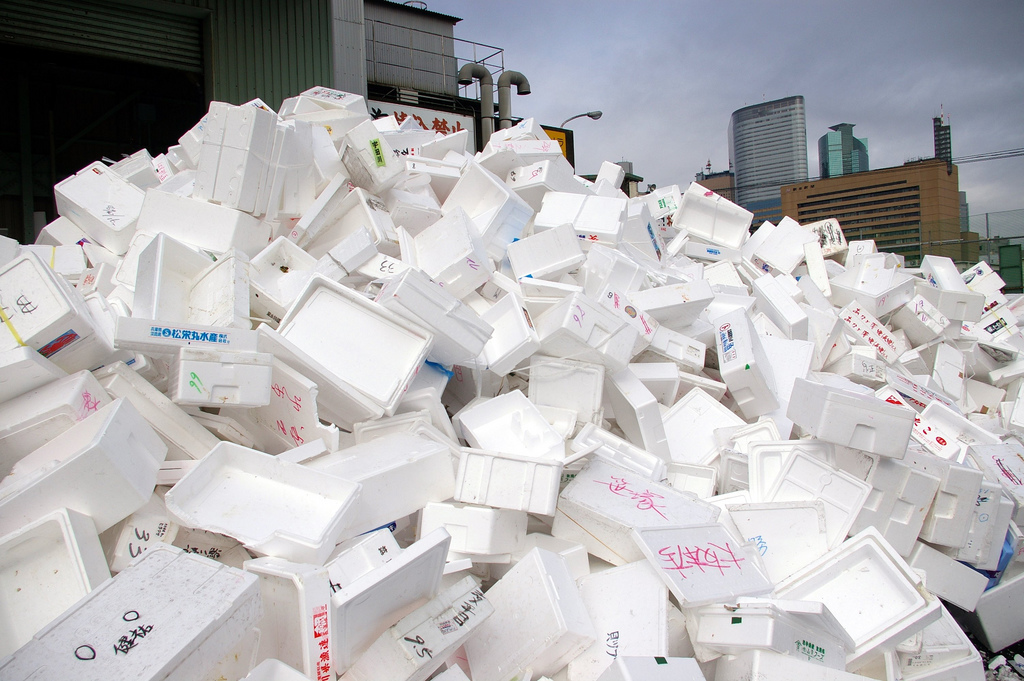Bye, Bye, Coffee Cups: Why San Francisco Banned Foam Products

In one of the most extensive such bans in the U.S., San Francisco recently voted to outlaw commonly used foam products due to their environmental impact.
The city's board of supervisors unanimously voted last week (June 28) to ban expanded polystyrene, the foam, petroleum-based plastic used in food packaging, packing peanuts, coffee cups and more. The ordinance, which goes into effect next year, is an extension of a 2007 ban of take-out food containers made of the foam, and is another step toward the city's goal to achieve zero waste.
Though such foam products are often colloquially referred to as Styrofoam, San Francisco's ban does not apply to trademarked Styrofoam — used in construction, housing insulation and some other products — which is an extruded board of polystyrene and not the expanded polystyrene being banned. [Bubbly Science: Modeling How Foam Behaves | Video]
What is expanded polystyrene?
To make expanded polystyrene (EPS), engineers surround tiny gas bubbles with polystyrene, resulting in this foam-like material, according to Rick Sachleben, a member of the American Chemical Society's panel of experts. EPS became popular because it is cheap and easy to make, has insulating properties, and is lightweight and waterproof.
But, as supporters of San Francisco's ban noted, the material does not biodegrade well, taking decades, possibly generations, to completely degrade.
"Because it's a synthetic plastic, it's slower to break down in the environment," Sachleben told Live Science. "If it gets into the environment, it blows around, it floats, it gets out there and it goes away slowly — really slowly."
And the material does often end up in the environment, Sachleben said.
Sign up for the Live Science daily newsletter now
Get the world’s most fascinating discoveries delivered straight to your inbox.
Because EPS products are commonly used in food containers, these materials often get contaminated with waste, compelling people to throw the foam away rather than recycle it. Or, people do not dispose of the items in designated bins, instead throwing them on the side of the road as litter, where they can disperse into the environment.
Recycling foam
Though EPS is completely recyclable, a few factors make it difficult to break down and reuse the material.
One of the most expensive aspects of recycling is moving a material from the place where it is used or disposed of to the recycling location. For a lightweight product like EPS, this is even more costly, said Eric Beckman, a polymer scientist and George Bevier Professor of Engineering at the University of Pittsburgh.
"This is where its strength is coming back to haunt it, because it's mostly made of air," Beckman told Live Science. "If you're trying to ship it to a place to recycle, you're filling up a truck with mostly air and paying to move it around, and that just doesn't work very well economically."
Compared with the EPS used in cups and food containers, packaging EPS can more easily be recycled, Sachleben said. That's because it's large and bulky enough to make the costly transport worthwhile, he said. Recycling companies can break up these larger EPS materials and use the little beads it's broken into to make new materials.
What next?
For San Francisco, the question remains: What will replace the foam products?
Beckman noted the most difficult aspect of replacing one product with another is that there are often trade-offs.
The life cycle of a product needs to be taken into consideration, from "what it took to make, what happens as you use it and what happens to it at the end of life," Beckman said.
"It's possible that in attempting to do away with polystyrene and eliminate the end-of-life problems that EPS has, people could replace it with something that's actually worse, which has higher impacts when you make it," Beckman explained. "In other words, you could make something that degrades beautifully in the environment, but it has so many impacts when you manufacture and transport it that the net effect is actually worse."
Original article on Live Science.










